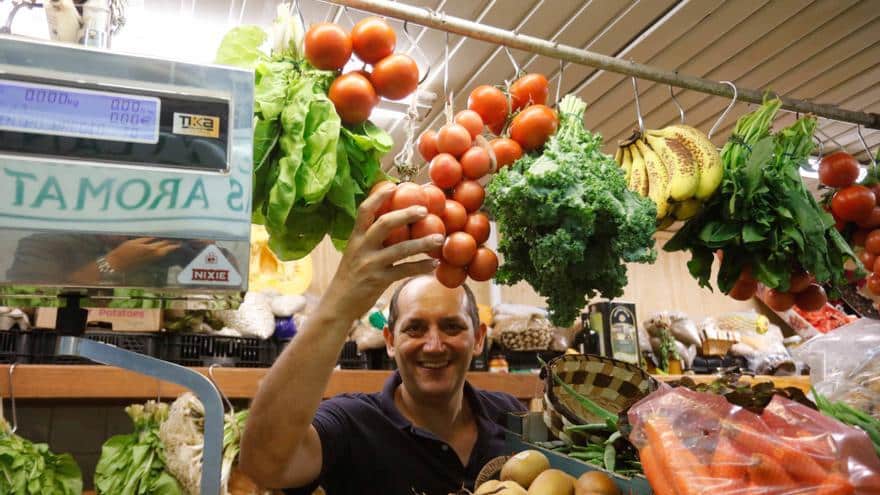With inflation running rampant, do not rule out having to soon resort to using the Gold Visa to buy vegetables on credit in the market, where prices are reaching heights never seen in some products. The ramellet tomato, for example, was quoted yesterday in some Mercat Nou stalls at 13 euros per kilo, five euros more than just a week ago. In only seven days, Ibizan customers have paid up to 62.5% more for the ramellet tomato. In other establishments in this area, the increase has been 46%: whoever wants to taste them must pay 9.5 euros per kilo, 3 euros more.
“It’s barbaric”, exclaims Joan Torres, owner of Frutas Catalina, when asked if he notices the inflation. And he gives the example of the famous ramellet tomatoes: “Normally they cost 7.8 euros per kilo; today [yesterday], 12.8 euros”. It is not the only product that has become much more expensive in recent weeks or months: “The same thing is happening with nuts. Many have gone from 3 to 5 euros per kilo. And on top of that, they are drier and of poorer quality. Chestnuts, for example, are smaller this year, as are almonds and hazelnuts, which are smaller in size”. The reason? Climate change and the fact that this year the rain is late. The same factors that are behind the high cost of tomatoes, a once staple food for the lowest incomes (the ‘working middle class’ that President Pedro Sánchez touts so much): the heat has wreaked havoc on their crops, so the supply has dwindled. The result: they have become so expensive that shopkeepers like Torres have already noticed that their customers “don’t buy as many. They stop consuming the same amount as before”.
In Fruita i Camp they have recorded the same rise in the cost of ramellet tomato, the product that in the not too distant past was to vegetables what, in fish, the morralla is to the grouper: “It cost 7to 8 euros a kilo a week ago. Now, 12.95 euros. Many people think twice before ordering it,” says Javier Miranda, employee of the Mercat Nou stall. Both the ramellet tomato and others, for example lettuce: one cost 3 euros yesterday, 1.15 euros more than just a week ago. And curiously it comes from Germany, a country that previously Spain exported to. The last straw: “Prices rise this way because of the lack of rain and heat,” so that much of the crops end up dry and scorched. And to this meteorological factor the fact that “fertilizers have become very expensive” must be added, which the farmer ends up passing on to his harvests.
A kilo of ramellet tomatoes sold by Monica Martinez, employed in Frutas Maria Cardona has risen by 3 euros in just a few days : from 6.5 to 9.5 euros per kilo (yesterday). “And don’t think you get much profit percentage,” she exclaims. The heat, distributors tell her, is the cause of the dwindling supply and that, consequently, the unfavorable environmental situation (which among other things causes the thermometers to reach 28 degrees at the end of October in the Pitiusas) ends up being passed on (upwards) to prices.
If only it were only the ramellet tomatoes! Even the price of artichokes has skyrocketed: from 3.9 euros per kilo in a few days have gone to 7.5 euros per kilo

For the full article, please visit Diario de Ibiza website here.

